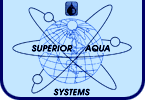|
||||||||||||||||||||||||||||||||||||
 |
||||||||||||||||||||||||||||||||||||
FILLMAN LABORATORIES - AUG. 30, 1988
Faith
Enterprises, Inc.
3225 B Fairfield Ave. S.
St. Petersburg, FL 33172
Re: Water Study With The ION-PURE Disinfection System.
On August 22, 1988, a controlled analysis of recreational water using a prototype of a swimming pool, source water from a municipal water treatment plant, a known bacteriological culture, and the Ion-Pure ionization system as the sole disinfectant was undertaken to determine the effectiveness of the Ion-Pure equipment in reducing bacterial levels.
A modified fifty-five (55) gallon aquarium was used as a simulated swimming pool along with a twenty (20) micron filter as a typical swimming pool filter. The Ion-Pure ionization unit was connected to the aquarium.
The bacterial culture used was a mixed population of Escherichia Coli, Staphylococcus Aures, Staphylococcus Epidermidis, and Streptococcus Pyogenes. The bacterial density of this culture was ascertained by the Membrane Filtration Method for Escherichia Coli using M-Endo Broth and a Heterotrophic plate using a Standard Plate Count agar. All bacteriological testing was performed in accordance with Standard Methods for the Examination of Water and Wastewater.
One hundred (100) milliliters of this culture was induced into the tank and allowed to circulate for ten (10) minutes. Bacteriological samples were collected aseptically at intervals of thirty (30), sixty (60), ninety (90), one hundred and twenty (120), and three hundred (300) seconds along with samples tested for pH, Chlorine, and Copper.
One hundred (100) milliliters were used as an aliquot for the Escherichia Coli and Heterotrophic plates. The Escherichia Coli were incubated at 35.0 C +/- 0.5 for twenty-four (24) hours, while the Heterotrophic plates were maintained at the same temperature, but allowed to incubate for forty-eight (48) hours.
The pH meter was calibrated using three (3) known Standards, while a water bath was used for incubation, and it was monitored for three (3) days. Temperatures of the bath were recorded once in the morning and once at night during the days of incubation. This was done in order to assure the proper calibration of the meter, and correct temperature of the incubator. A positive control plate and a negative control plate were run to check the ability of the broth and agar to induce bacteria groth as well as to check on the technique.
The conclusion arrived at by analyzing this data is that after thirty (30) seconds of exposure to the treatment by the Ion-Pure system, the bacterial levels were well within the accepted limits for recreational waters.
Sincerely,
Allan
C. Fillman
Laboratory Director/Chemist